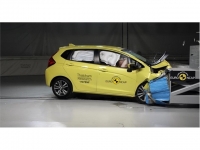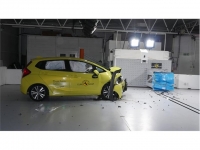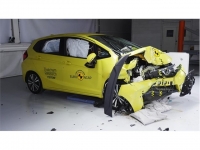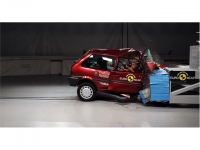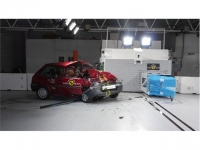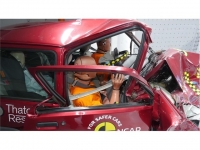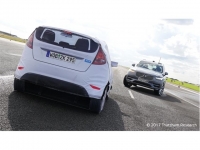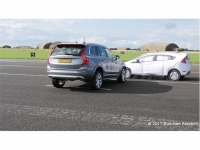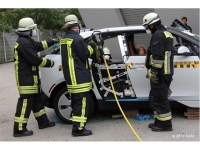Automobiles
Euro NCAP Road Map 2025
In Pursuit of Vision Zero

Euro NCAP (Source: Copyright © 2017 Euro NCAP)
USPA NEWS -
Since its establishment in 1997, Euro NCAP has been the catalyst for significant and sustained advances in automotive safety. Euro NCAP independent crash tests and continuously evolving assessment protocols have given consumers the knowledge they needed to help choose safety and an estimated 76 thousand lives have been saved in the EU as a result.
Euro NCAP launched its Road Map 2025, setting out for the first time the programme´s priorities for the mobility and technological revolution the auto industry is just beginning to experience. Euro NCAP's objective is to offer clarity and confidence to motoring consumers, highlighting new automated driving technologies and raising awareness of their benefits whilst also helping to ensure their safety potential is fully realised.
As the Road Map 2025 makes clear, Euro NCAP will challenge vehicle manufacturers to offer the best possible technology as standard in all segments and countries, protecting not only car occupants of all ages but also increasingly addressing the safety of other more vulnerable road users.
Secondary safety will remain at the heart of Euro NCAP´s consumer ratings for some time but they also recognise that primary safety will have an increasingly important role to play, and for the first time now tertiary safety is addressed. Euro NCAP´s strategy going forward will be to emphasise the integration of primary, secondary and tertiary safety features as enablers of a more holistic, safe system approach, in Pursuit of Vision Zero.
Secondary safety will remain at the heart of Euro NCAP´s consumer ratings for some time but they also recognise that primary safety will have an increasingly important role to play, and for the first time now tertiary safety is addressed. Euro NCAP´s strategy going forward will be to emphasise the integration of primary, secondary and tertiary safety features as enablers of a more holistic, safe system approach, in Pursuit of Vision Zero.
The Road Map outlines a timeline for the introduction of key protocol enhancements, including:
Primary Safety
Driver Monitoring (2020), Automatic Emergency Steering (2020, 2022), Autonomous Emergency Braking (2020, 2022), Vehicle to Vehicle Data Exchange and Vehicle to Infrastructure (2024)
Secondary Safety
Whiplash/Rear-end Crash Protection (2020), Pedestrian and Cyclist Safety (2022)
Tertiary Safety
Rescue, Extrication and Safety (2020), Child Presence Detection (2022)
Primary Safety
Driver Monitoring (2020), Automatic Emergency Steering (2020, 2022), Autonomous Emergency Braking (2020, 2022), Vehicle to Vehicle Data Exchange and Vehicle to Infrastructure (2024)
Secondary Safety
Whiplash/Rear-end Crash Protection (2020), Pedestrian and Cyclist Safety (2022)
Tertiary Safety
Rescue, Extrication and Safety (2020), Child Presence Detection (2022)
Euro NCAP President, Pierre Castaing, said,
“Safety has come a long way since we started testing cars twenty years ago and consumers now see it as a key aspect of their purchasing decision. Many predict that the car and our personal mobility will change more in the next ten years than it has in the last one hundred. Going forward one of Euro NCAP´s vital roles will be to offer clear, impartial guidance on these emerging and increasingly automated technologies, whilst also raising awareness of their significant life saving benefits.“
“Safety has come a long way since we started testing cars twenty years ago and consumers now see it as a key aspect of their purchasing decision. Many predict that the car and our personal mobility will change more in the next ten years than it has in the last one hundred. Going forward one of Euro NCAP´s vital roles will be to offer clear, impartial guidance on these emerging and increasingly automated technologies, whilst also raising awareness of their significant life saving benefits.“
Michiel van Ratingen, Secretary General, said,
“The potential safety benefits of automated driving are huge. If we can eliminate human error, we should see road casualty numbers tumbling and many lives being saved. But there is a lot of misunderstanding, over-expectation and perhaps some suspicion, of a world in which cars can drive themselves. Our role will be to provide clear information to consumers about the degree of automation in a car and how safely that automation has been implemented. Quite a challenge, but essential if Euro NCAP is to continue pressing for improvements from those who make cars and providing meaningful information to those who buy them.“
Click on 'More Information' link below to view youtube video.
“The potential safety benefits of automated driving are huge. If we can eliminate human error, we should see road casualty numbers tumbling and many lives being saved. But there is a lot of misunderstanding, over-expectation and perhaps some suspicion, of a world in which cars can drive themselves. Our role will be to provide clear information to consumers about the degree of automation in a car and how safely that automation has been implemented. Quite a challenge, but essential if Euro NCAP is to continue pressing for improvements from those who make cars and providing meaningful information to those who buy them.“
Click on 'More Information' link below to view youtube video.
more information: https://www.youtube.com/watch?v=hCqWt9JuSko
Liability for this article lies with the author, who also holds the copyright. Editorial content from USPA may be quoted on other websites as long as the quote comprises no more than 5% of the entire text, is marked as such and the source is named (via hyperlink).

